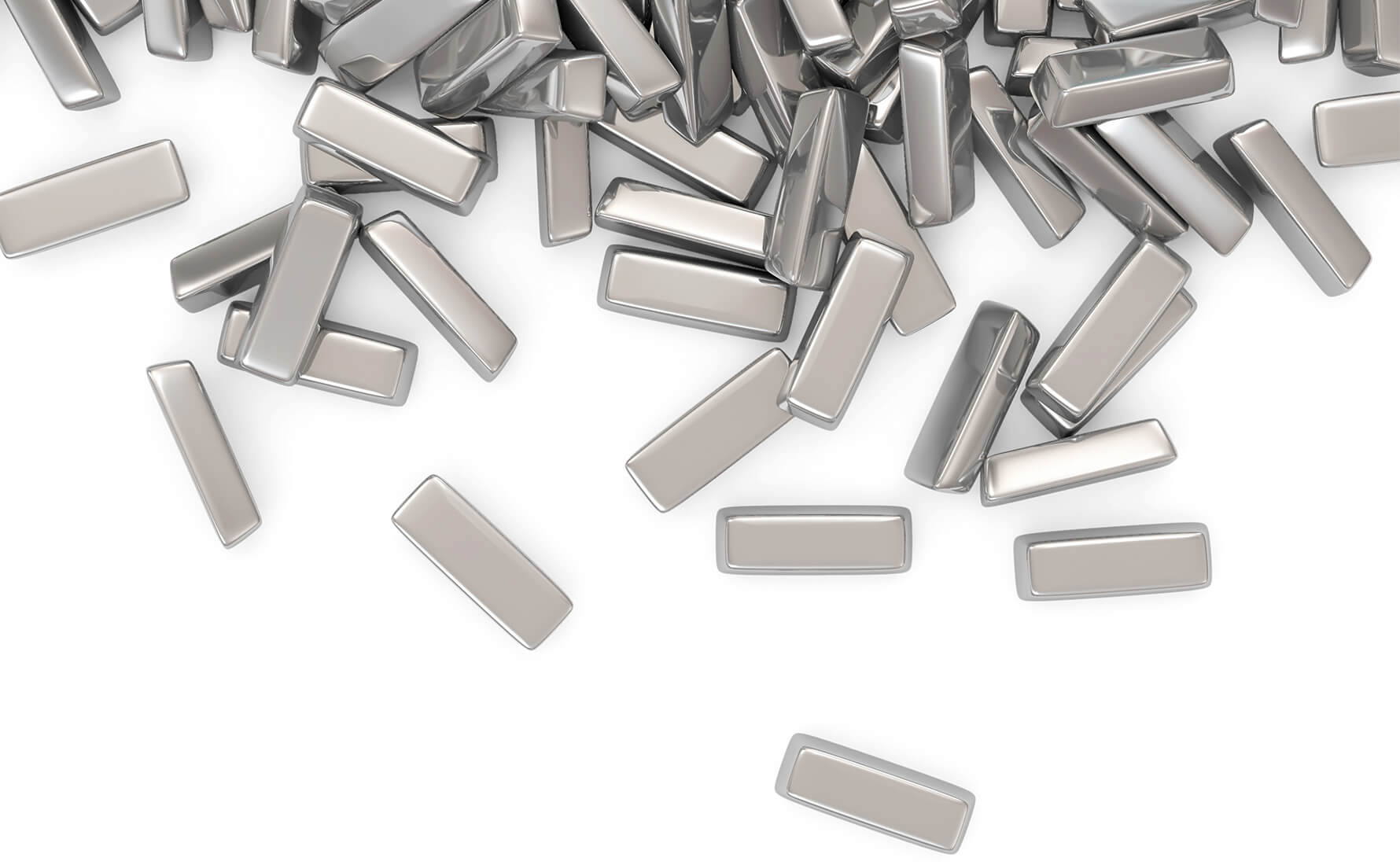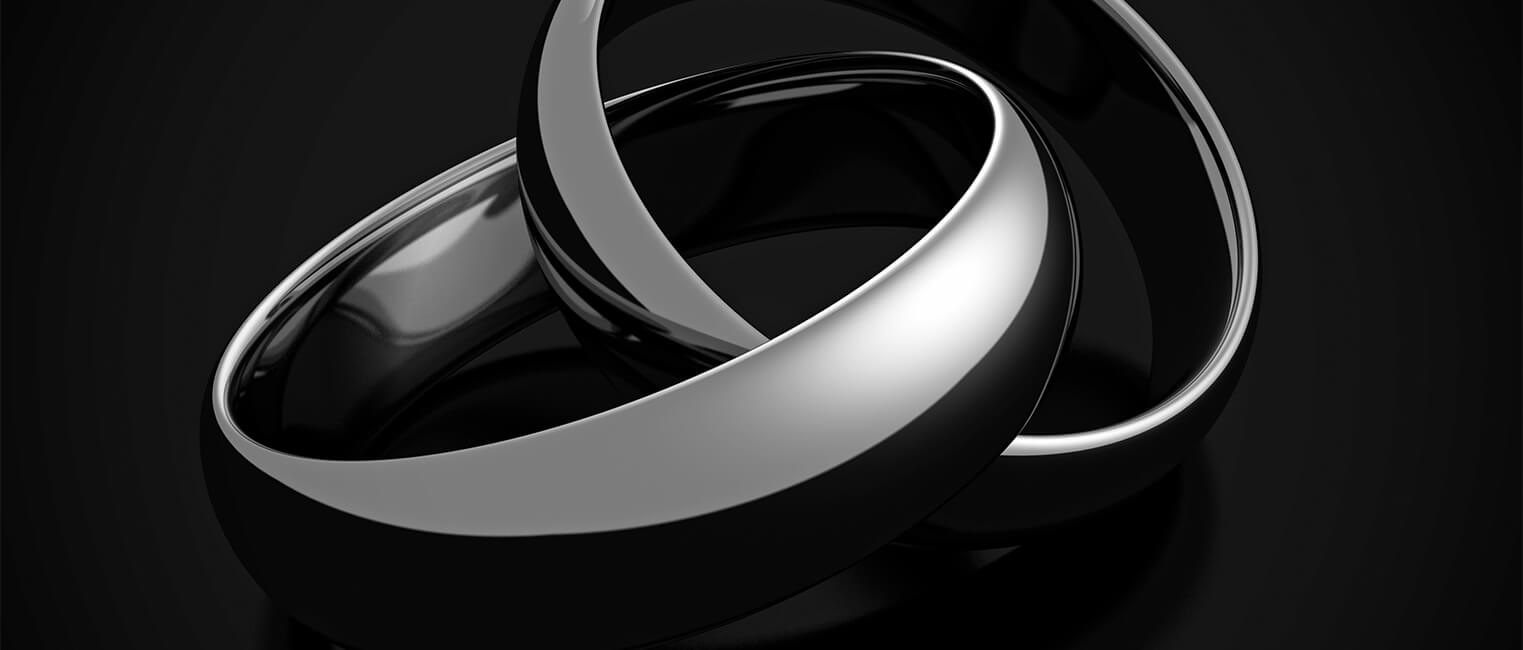
Metal education
GOLD (Au)
24 Karat gold is a dense, malleable precious metal that is bright yellow in color and can be polished to a high luster. In its pure form it is considered too soft and not suitable to use in jewelry. Gold is commonly mixed with other metals, or alloys, to create a wide range of color variations and working properties.
White gold is a silvery-looking gold alloy that contains gold mixed with palladium, nickel, or sometimes zinc to achieve its color. White gold has yellow undertones and is commonly rhodium-plated to create a whiter appearance. The plating will eventually wear away at which time it can be replated. X1 White Gold is a super white alloy that does not require rhodium-plating.
• 24 Karat gold fine (99.7% gold).
• 18 Karat gold is 18 parts gold or 75% pure gold content, which may be marked as 750.
• 14 Karat gold is 14 parts gold or 58% pure gold content, which may be marked as 585.
• 10 Karat gold is 10 parts gold or 41% pure gold content.

PLATINUM (Pt)
Platinum is a dense, malleable metal that is white in color with cool undertones. It is almost always used in its purest form in jewelry, 95%. Platinum is substantial in weight. Comparatively, a ring in platinum will weigh almost 60% more than the same ring in 14kt gold. For these reasons a platinum ring is significantly more expensive than the same item in a gold alloy.
PALLADIUM (Pd)
Palladium is a member of the platinum metal group and is a soft, silvery-white color with slightly gray undertones. It is also used in an almost pure form in jewelry, 95%.
SILVER (Ag)
Silver is a soft, lustrous metal that is very malleable and silvery- white in color. Sterling silver is a common alloy comprised of 92.5 % silver and 7.5 % copper.

Choose a Precious Metal that
Fits Your Lifestyle
We all know that different people have different interests. But did you know that when choosing jewelry, you can pick a metal that fits your interests? Certain precious metals, platinum for instance, are more durable and fit an active lifestyle. Look at the lifestyles below, and see the metals that fit yours!

Tom leads a moderately active lifestyle. He likes to play sports with his friends, but you won't catch him on the field every day. When it comes to romance, he's a traditionalist. What should he do to match his lifestyle?
Buy gold.
Coveted for its luster and beauty, gold is the traditional metal for wedding rings. However, gold continues to hold its own among a bevy of new metals.
The percentage of gold in a ring is measured by karats. Since gold is a relatively soft metal, the higher the percentage of gold (and the higher the karat), the softer the ring. Men's rings generally are made in 10, 14 and 18 karat gold, so that the rings will be more durable.
Most gold jewelry is either yellow or white. The alloys used will alter the color. Some gold is plated with rhodium to make it appear a brighter white. Since the coating can wear away with time, active individuals may prefer a more durable white metal such as platinum or palladium.
Visit your local American Gem Society jeweler for quarterly polishing and cleaning to keep the luster alive.

Evelyn likes to wear jewelry every day. Earrings, bracelets, rings, necklaces — and she likes to wear different jewelry often. What should she buy?
Silver.
Silver is the softest - and the least expensive - of the fine metals. Since it scratches easily, it is best used for jewelry that is not worn daily.
Since it is inexpensive, silver allows you to have many pieces you can switch out. People who are extremely active or enjoy gardening or working with their hands, may want to consider a harder metal.

Gary is active. He likes sports, and he often helps his wife in the garden. He's found he often forgets to remove his gold wedding ring, and it is covered in scratches. What should Gary do?
Purchase titanium.
Coming in an array of silvery colors, titanium is a great metal for the most active of people. Titanium is the hardest of the metals, therefore more scratch, dent, and bend resistant. Another benefit is that in its pure form, titanium is 100% hypoallergenic.
Titanium does have its drawbacks: since it cannot be soldered, titanium rings cannot be sized and in an emergency, it is much harder to cut off than other metals.

Anna is young and active with many interests. But she also has sensitive skin, which white gold tends to irritate. Being young, she is still climbing the career ladder. What should she buy?
Palladium.
This is a popular choice among the young and active. As a white metal, palladium strikes a harmonic balance between white gold and platinum. Harder than gold, yet softer than platinum, palladium can be used in jewelry in its near pure form, making it hypoallergenic.
Also, palladium, unlike white gold, is naturally white. Palladium is also less expensive than platinum and can be sized and polished.

Nancy keeps her schedule full, day and night. She needs jewelry that can keep up with her and can have the style she needs if a late business dinner leaves her running for the night club. What should Nancy do?
Invest in platinum.
This prestigious - and expensive - metal is hypoallergenic dense, heavy and scratch resistant. It fits an active style where a sense of class and elegance are desired, even while on the run.

